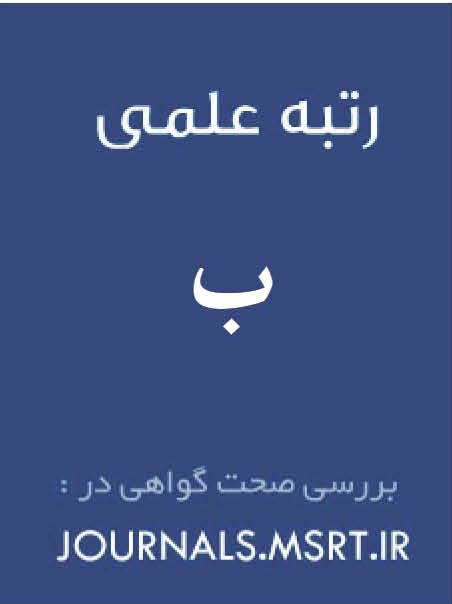Dissecting the Religious Approach to the Network of Security Challenges in Artificial Intelligence
Keywords:
Artificial Intelligence, Religion, Jurisprudence, Professional Ethics, Social SecurityAbstract
This study aims to dissect the religious approach to the network of security challenges in artificial intelligence. In recent years, advanced artificial intelligence technology has rapidly integrated into human life, becoming an essential tool. As one of the foundational technologies, artificial intelligence possesses unique capabilities that can bring about a significant transformation in various fields of science. However, there remain numerous ambiguities regarding religiously based approaches to artificial intelligence. This study, employing a descriptive-analytical method, seeks to answer the question: What is the jurisprudential perspective on the positive and negative consequences of artificial intelligence usage? The findings of this study indicate that jurisprudence, as an ethical and religious guide, can lead to a substantial transformation in the domain of international laws and regulations governing the use of this technology, as well as in the professional ethics of its users, particularly in preventing security threats and maintaining public peace.
Downloads
References
Abdi, B., & Samimi, M. (2010). The Role of Expert Systems in the Management of Military Organizations. Military Management(40), 177-198.
Aghajani, M. (2021). Artificial Intelligence from Basic to Advanced. Nasl-e Roshan.
Albokarami, H. (2024). A Review of the Role of Artificial Intelligence in Patient Treatment Management in Hospitals: From Admission to Treatment. Second International Congress on Science, Engineering, and New Technologies,
Alipour, M. (2009). Introduction to the History of the Science of Principles. Al-Mustafa (PBUH) International Center for Translation and Publishing.
Alizadeh, A., & Kaviani, M. M. (2011). The Right to Individual Security in the Constitution of the Islamic Republic of Iran. 41(4(4)), 257-272.
Bahrani, S. Y. (2002). Al-Durar al-Najafiyya (Vol. 3). Mustafa (PBUH) Heritage Revival Company.
Barzegar, M., & Gholamhossein, E. (2019). Criminal Liability of the Autonomous Vehicle User for Injuries Caused by It. Criminal Law Research(30), 201-229.
Darikvand, F. Z. (2022). The Right to Education from the Perspective of Imamiyyah Jurisprudence and Iranian Law. International Journal of Legal Studies, 6(21).
Desouza, K. (2002). Managing Knowledge With Artificial Intelligence. Westport. https://doi.org/10.5040/9798216977254
Farahani, A., & Mirzadeh Kouhshahi, N. (2022). Artificial Intelligence, Human Rights Violations, and Liability. Iran.
Farajollahi, M. (2015). Development of a Legal Expert System for Solving Inheritance Issues in Iran Faculty of Engineering, Tarbiat Modares University]. Tehran.
Firoozabadi, M. i. Y. q. (1994). Qamus al-Muhit (Vol. 4). Dar al-Kutub al-Ilmiyyah.
Gharati, M. (2004). Tafsir Noor (11 ed., Vol. 10). Cultural Center for Quran Lessons.
Ghasempour, A., & Safaei, N. Z. (2024). Legal Issues Arising from Artificial Intelligence in Labor Law. Scientific Journal of Government and Law, 5(1(15)), 59-80.
Ghiamatyoun, M. H. (2015). Intrusion Detection Using Data Mining Methods Faculty of Industrial Engineering, K. N. Toosi University of Technology]. Tehran.
Hajializadeh, A., & Nasiri, F. (2021). Artificial Intelligence and E-Commerce from the Perspective of Jurisprudence, Law, and Global Trade. Journal of New Approaches in Islamic Studies(9), 79-122.
Hakim, S. M., & Ebrahimi, S. H. (2024). A Jurisprudential and Legal Review of the Deprivation of Citizen Security in Artificial Intelligence. Islamic Jurisprudence and Legal Research Journal(72), 10-74.
Izadi, J., & Nezafati, T. (2024). An Examination of the Military and Political Threats and Opportunities of Artificial Intelligence on Iran's National Security. International Relations Studies(67), 217-237.
King, T. C., Agarwal, N., Taddeo, M., & Wahbi, Z. (2023). Artificial Intelligence Crimes: An Interdisciplinary Analysis; Threats and Predictable Solutions. Civilizational Law, 6(18), 133-154.
Kulayni, M. i. Y. q., & Behnazhad, A. (1996). Usul al-Kafi. Arayeh Publications.
Mahdizadeh, S. (2017). Modeling and Predicting Some Parameters Used in Water and Agricultural Management Using AI Models and Integrating These Models with Stochastic Methods Faculty of Agriculture, Urmia University]. Urmia.
Makarem Shirazi, A. M. S. M. A.-D. S. d. (2008). Ethics in the Quran. Imam Ali ibn Abi Talib Publications.
Meshkini, A. (1995). Istilahat al-Usul wa Mu'azam Abhathiha (6 ed.). Al-Hadi.
Motahhari, M. (2015). General Islamic Sciences: Usul al-Fiqh and Fiqh. Sadra.
Motalabi Karbakandi, H. (2013). Analysis of Artificial Intelligence and Its Functions Compared to Human Thinking Faculty of Theology and Islamic Studies, University of Qom]. Qom.
Mousavi, R. (2000). Introduction to the Basics of Fiqh or Islamic Law. Danesh Shargh.
Nasr, H., & Rahmati, E. A. (2003). Ideals and Realities of Islam. Jami Publications.
Nazarpour, M., Mousavi, S. H. N., & Hosseini Shirvani, M. S. (2020). Application of Artificial Intelligence in Tax Auditing. Audit Knowledge Journal(81), 198-226.
Nikzad Dinan, H. (2020). The Economics of Artificial Intelligence: Future Consequences on Work. Bazkhord Journal(15).
Noori, M. E. (1999). Introduction to Fiqh. Ahsan al-Hadith.
Ragheb Isfahani. (1996). Mufradat Alfaz al-Quran (Translation of Mufradat Ragheb). Navid-e Islam Publications.
Rostami, M. (2022). Identifying and Introducing the Practical Capacities of Artificial Intelligence in the Development of Strategic Themes in Military Organizations. Strategic Defense, 20(78), 34-73.
Sadeghi, M., & Mehdi, N. (2019). Smart Contract Technology: A Tool for the Development of E-Commerce: Requirements and Policies. Journal of Technology Growth(61), 1-11. https://doi.org/10.52547/jstpi.20805.16.61.1
Sadoughi, F., & Abbas Sheikh, T. (2011). Application of Artificial Intelligence in Medical Decision-Making. Health Information Management(3), 440-445.
Saedi Razi, M. (2020). What Transformation Does Artificial Intelligence Bring to Jurisprudence and Principles? First National Conference on Artificial Intelligence and Islamic Sciences,
Saleh Abadi, R. (2019). Determining the Scope of Artificial Intelligence Research from the Perspective of Law and Public Interest Faculty of Law, Shahid Beheshti University.
Saraabadani, A. (2018). Artificial Intelligence and Expert Systems. Jaliz.
Sedighi, S. (2016). Physical Health in the Quran. National Conference on Health from the Perspective of the Holy Quran,
Tabarsi, F. i. H. (1985). Majma' al-Bayan fi Tafsir al-Quran. Dar al-Ma'arifa & Nasir Khosrow.
Tabatabai, M. H. (1995). Al-Mizan fi Tafsir al-Quran. Islamic Publishing Office of the Society of Seminary Teachers.
Tahanawi, M. (1997). Kashshaf Istilahat al-Funun. Dar al-Kutub al-Ilmiyya.
Valipour, A., & Esmaeili, M. (2021). Feasibility of Civil Liability for General Artificial Intelligence in Cases of Damage Under Civil Law. Contemporary Legal Thought Quarterly, 2(3), 1-8.
Vijeh, M. R. (2011). Legal Security as a Condition for Judicial Security. Rahbord, 20(58), 95-130.
Yousefi, A. A. (2005). Economic Justice from the Perspective of Islam with Specific Reference to the Liberal Capitalist System. Ketab-e Naqd(37), 51-72.
Downloads
Published
Submitted
Revised
Accepted
Issue
Section
License
Copyright (c) 2025 Islamic Knowledge and Insight

This work is licensed under a Creative Commons Attribution-NonCommercial 4.0 International License.








